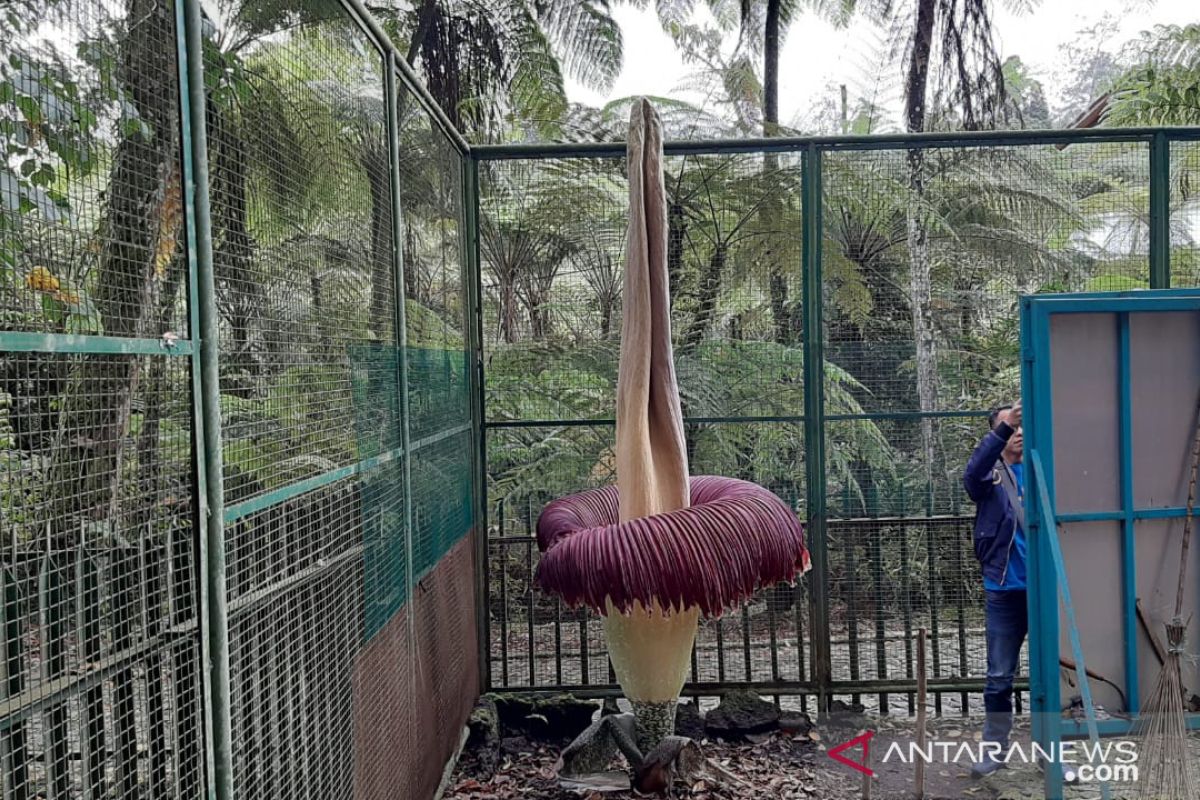The odor comes from amino acids that come out through the surface of the cob. The stench produced when the flowers bloom attracts the attention of various insects, and they come and help pollinate the plantJakarta (ANTARA) - A giant corpse flower (Amorphophallus titanum Becc.), reaching 291 centimeters in height, has bloomed once again in the Cibodas Botanical Garden Conservation Center at the Indonesian Institute of Sciences (LIPI) in Bogor.
The flower, which is a part of the taro tribe (Araceae), is also known as the carcass flower as, when it blooms, it emits an odor so foul and potent that it can be smelled within a 100-meter radius.
"The odor comes from amino acids that come out through the surface of the cob. The stench produced when the flowers bloom attracts the attention of various insects, and they come and help pollinate the plant," said one of the researchers at the Plant Conservation Institute for Cibodas Botanical Gardens, Destri, in a statement received in Jakarta on Friday.
The plant was obtained from the Manau River in the Kerinci Seblat National Park, West Sumatra during an exploration in 2000.
The plant is so named on account of its large flowers, and is one of the largest in the world, said LIPI Cibodas Botanical Garden Plant Conservation researcher Muhammad Imam Surya.
"The towering flower form is actually a yellow-colored cob, or spadix, surrounded by a flower sheath that has an attractive orange-red shape in bloom," he said.
Related news: Corpse flower blooms in Bengkulu residents` breeding area
Related news: Bengkulu promotes "corpse flower" Rafflesia Arnoldii to attract Arab tourists
He further said that the flower has a unique quality: if the food reserved in the tubers is sufficient and the environment is supportive, then compound flowers appear. However, if food reserves are lacking, then the leaves grow back.
Amorphophallus titanium has three stages in its life cycle, namely the vegetative phase, the generative (flowers) phase, and the dormant phase (rest). When a typical endemic plant of Sumatra, it does not appear on the surface of the soil.
It is categorized as an endangered plant, based on its classification by the International Union for Conservation of Nature (IUCN). It is a protected species in Indonesia in accordance with Government Regulation number 7 of 1999.
The Plant Conservation Center of the Cibodas Botanical Garden has several Amorphophallus titanium specimens. The first corpse flowers bloomed at the Cibodas Botanical Garden on March 11 in 2004, after their tubers were planted in 2000 as part of an exploration. They bloomed for the last time on April 5, 2019.
Those who wish to see the corpse flowers and various other types of plants in the Cibodas Botanical Garden will have to wait as the facility is closed from 19 to 31 March as part of efforts to stem the spread of COVID-19.
Related news: President wants Bogor botanical garden more attractive
Related news: Over 23,600 people visit Bogor Botanical Garden
Translator: Prisca Triferna Violleta/Aria
Editor: Mulyo Sunyoto
Copyright © ANTARA 2020










